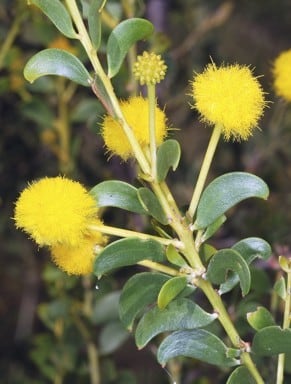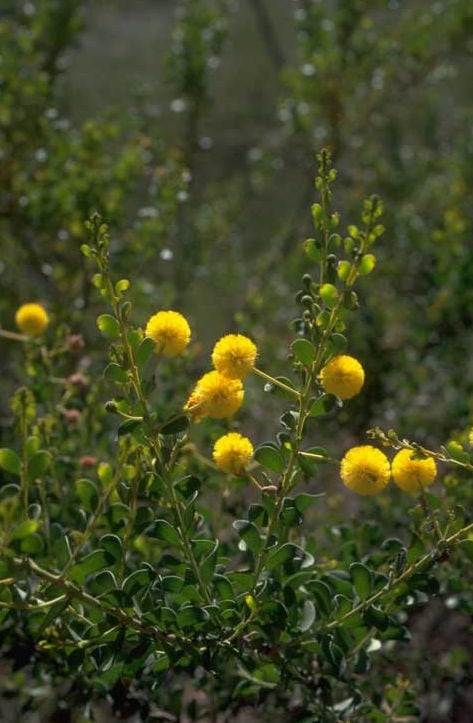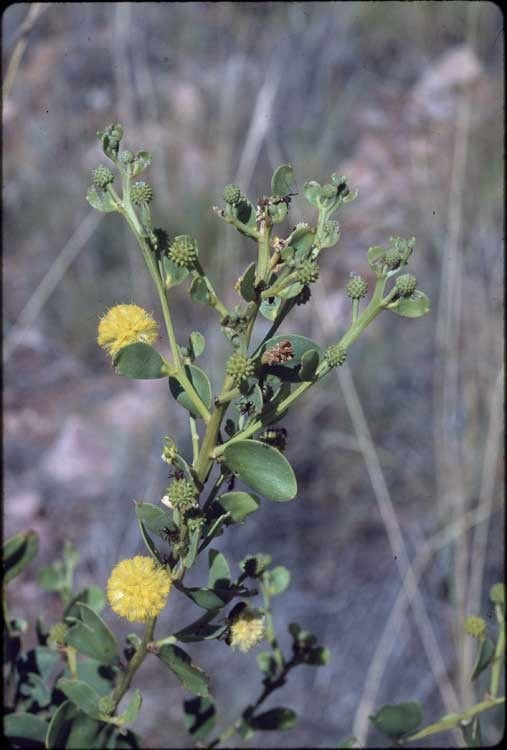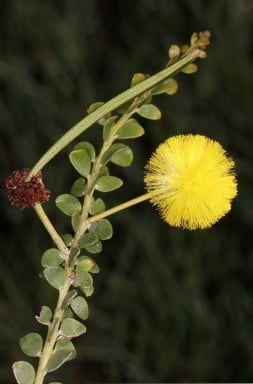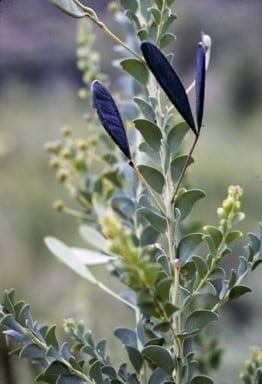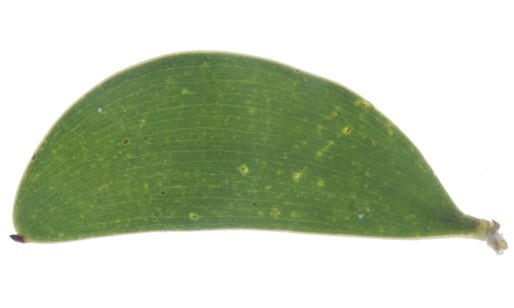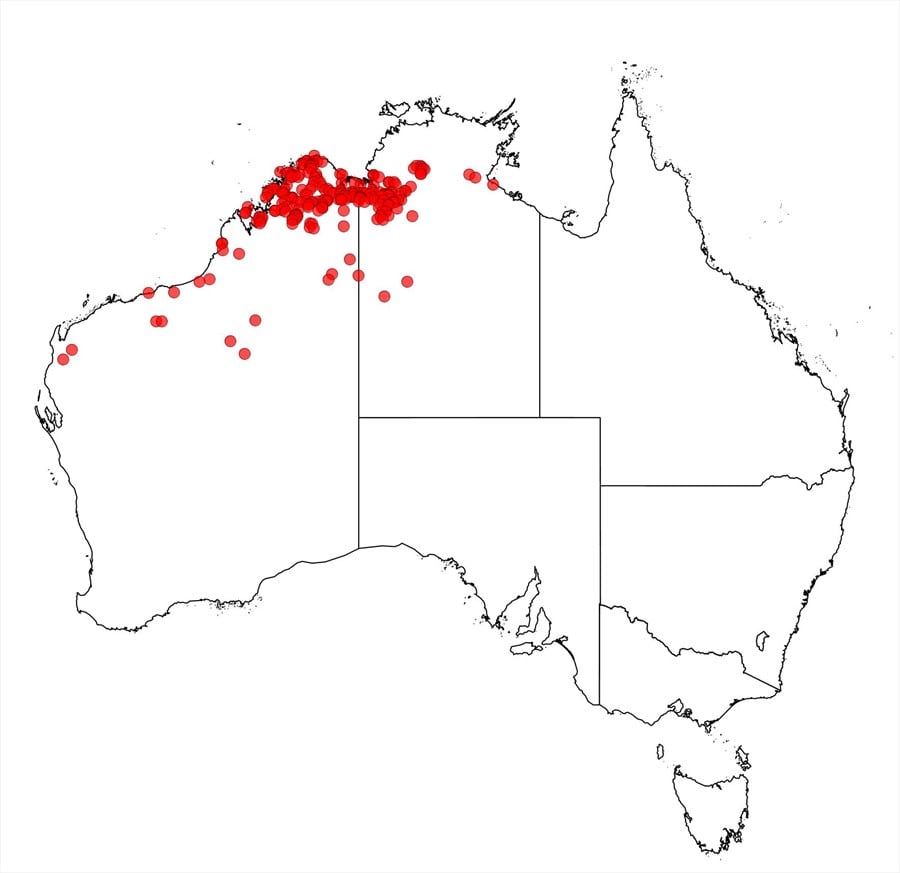Acacia translucens A.Cunn. ex Hook.
WATTLE
Acacias of Australia
Family
Fabaceae
Distribution
Occurs in the Kimberley region of W.A. and in north-western (particularly Victoria River region) N.T.
Description
Shrub to 2 m high, erect, glabrous, resinous, sometimes scurfy, usually branching near base. Bark smooth, dark grey to black. Branchlets angular towards apices often with resin-crenulated ridges. Phyllodes elliptic to narrowly elliptic (sometimes slightly wider below or above middle), oblique, curved and slightly sigmoid, (0.6–) 1–2 cm long, 4–9 mm wide, with an oblique short mucro (the apices of young phyllodes often dilated, pellucid and appear as if filled with gummy or resinous fluid, fide protologue), thinly coriaceous, sometimes ±glaucous, with 3 ±visible main nerves; minor nerves longitudinally obscure, finely longitudinally wrinkled; gland basal, minute, to 1.5 mm above pulvinus. Peduncles (5–) 13–22 cm long, 0.5–0.7 mm diam. Heads 5–8 mm diam., 20–50-flowered, medium golden or bright yellow, sometimes light golden; buds slightly spreading; bracteoles mostly with short irregularly triangular ±peltate lamina. Flowers 5-merous; calyx cupular, 1–1.3 mm long, dissected to 1/8–1/6; corolla 2–2.5 mm long, dissected to 1/3–1/2; petals with prominent midrib. Pods erect, narrowly oblanceolate to oblanceolate, basally tapered, 2–5.5 cm long, (4–) 5–10 mm wide, thinly woody and brittle, brown to blackish, obliquely nerved, opening elastically from apex. Seeds oblique, oblong, 3–5.8 mm long, brown; pleurogram with pale halo; funicle-aril narrowly turbinate.
Phenology
Flowers Jan.–Oct.
Habitat
Grows often on sandstone, on hillsides and gully floors, in eucalypt woodland, common in deep red sand in ‘spinifex’ country.
Specimens
W.A.: Mount Barnett Stn, J.S.Beard 4185 (NSW); 5 km E of estuary mouth of the Mitchell R., B.R.Maslin 5101 (NSW, PERTH). N.T.: Keep River Natl Park, S.King 79 (DNA); Legune Stn, G.Leach 4108 (BRI, DNA, NSW, PERTH).
Notes
Acacia translucens is most closely related to Acacia sp. Kununurra (G.Lullfitz 6195), A. nuperrima, A. setulifera and A. stellaticeps, which together comprise part of the ‘A. stigmatophylla group’. There are variants and possibly intergrades between A. translucens and some of these taxa which require further investigation. For example, there are several specimens from the Mitchell Plateau area with small phyllodes (to 1 cm long) which have an apical setose point (lost or broken from many phyllodes probably with age), as well as having bracteoles similar to A. nuperrima, e.g. B.R.Maslin 5091 (NSW, PERTH).
FOA Reference
Data derived from Flora of Australia Volumes 11A (2001), 11B (2001) and 12 (1998), products of ABRS, ©Commonwealth of Australia
Author
Dr M.D.Tindale and Dr P.G.Kodela with the assistance of M.Bedward, S.J.Davies, C.Herscovitch, D.A.Keith and/or D.A.Morrison
Minor edits by B.R.Maslin
This identification key and fact sheets are available as a mobile application:
URL: https://apps.lucidcentral.org/wattle/
© Copyright 2018. All rights reserved.
